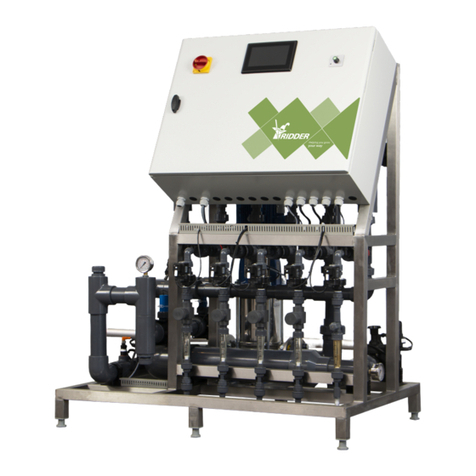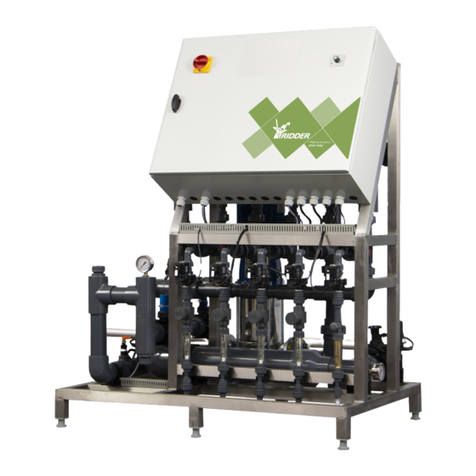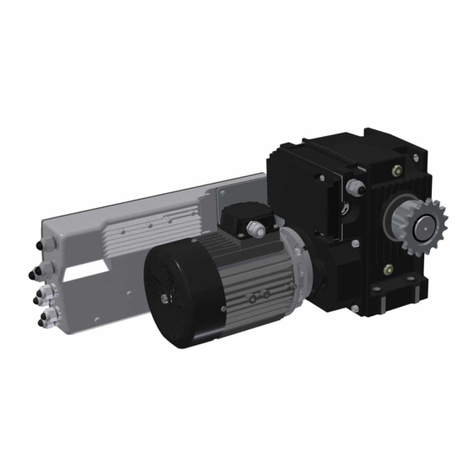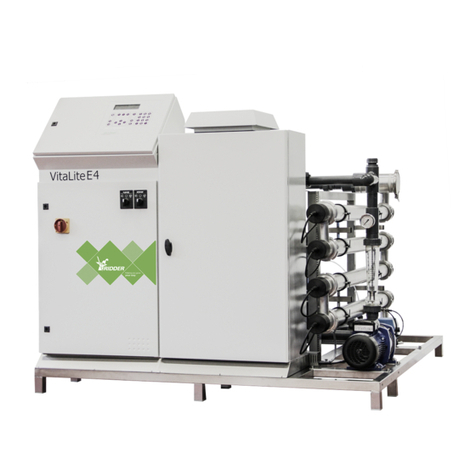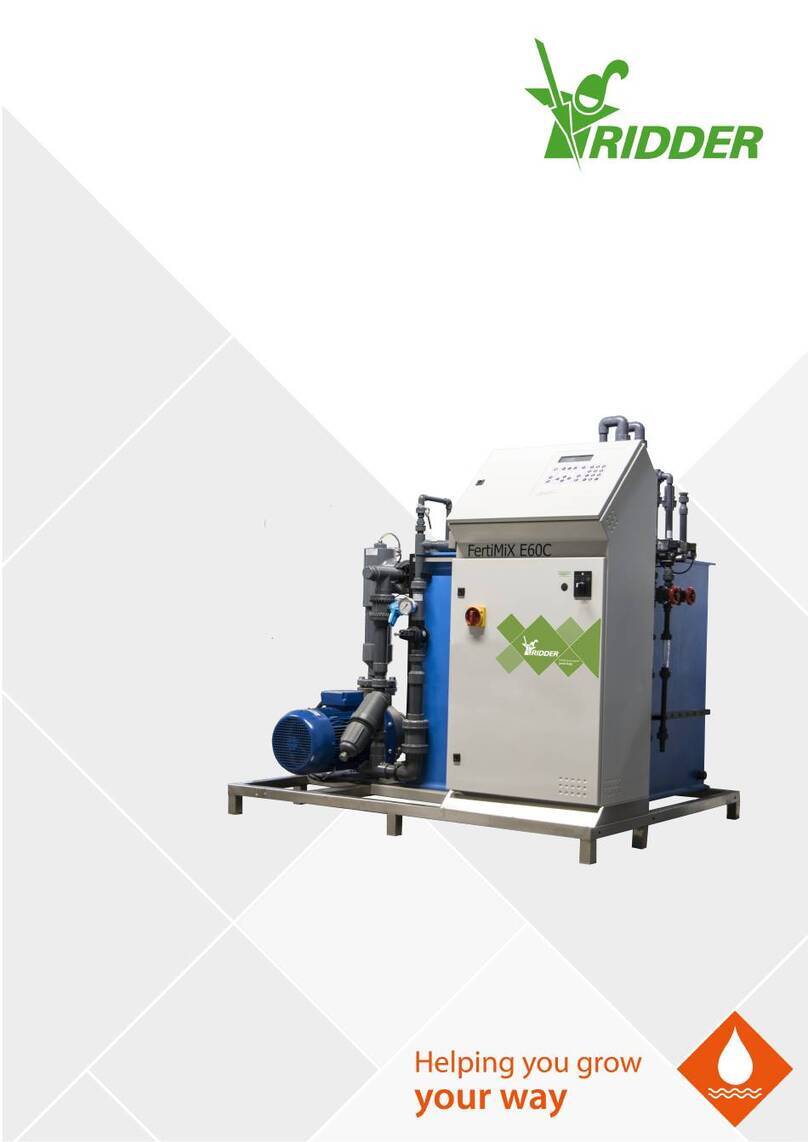
The type plates of some components also specify the version numbers of the software
installed.
1.2 How the Aqua CX300 works
The Aqua CX300 is designed to control irrigation and fertilizer application (collectively
called 'fertigation'). These processes are controlled based on a number of factors,
such the desired EC and pH levels in the irrigation water, and the amount of solar
radiation received by the plants. To maximize crop growth, these factors need to be
set at specific levels. These desired values (or 'setpoints') depend on a number of
variables, such as the crop variety, the time of day and the season.
Irrigation control is a process of continuous adjustment that is subject to a number of
external factors, such as the weather. To respond to these factors effectively, the
controller needs to be able to measure them. Examples of such measurements are
the EC level, pH level, solar radiation sum, flow rate and contact start level.
The controller calculates the actual control setpoints based on the difference between
the pre-set setpoints and the corresponding measured values. The controller uses
these calculated setpoints to control or operate the ‘corrective mechanisms’, such as
the irrigation unit or the valves.
1.3 Valve groups and valves
Valves can be assigned to valve groups in any combination. Each of these valve
groups can then be assigned to one of the pre-set irrigation programs. An irrigation
program is a group of settings that enable you to control the EC level (i.e. the
concentration of fertilizers) and pH level (i.e. the acidity) of the irrigation water
according to the precise needs of your crop. See also: "Programs" on page20.
A valve group consists of a number of valves. An irrigation percentage can be set for
each individual valve. Up to 160 valves can be divided among the valve groups. See
also: "Assign valves to group" on page16.
Up to six valves can be operated simultaneously. If both an irrigation program and
fogging program are active at the same time, this maximum will apply for both
programs in total. The following restrictions also apply:
the current of each output may not exceed 1 A;
the total current of each valve module side may not exceed 2 A;
the total current of all outputs in a system may not exceed 4 A (this value is
determined by the power supply).
1.4 Irrigation programs
Each irrigation program consists of a number of controls (e.g. Radiation Start, Contact
Start and Time Start). Each control, in turn, consists of a number of settings that
enable you to tailor irrigation (or fertigation) to your exact needs. For example, the
Radiation Start control includes the 'Radiation start active' and 'Start time of radiation
start' settings.
Aqua CX300
7






